Project
Investigation of the Tip Clearance Sensitivity of an Axial Compressor Cascade Using Scale Resolving Simulations
The energy system of the future is likely characterized by fluctuating availability of renewables. Compressed air storage or H2 powered gas turbines that satisfy peak demands require new and advanced turbomachine designs with an extended operating range and a reduced efficiency penalty when run in off-design conditions. The operating range of the compression system is strongly dependent on the size of the tip clearance between the moving rotor and stationary casing. Due to the gap, a pressure driven leakage flow exists that mixes with the main flow and rolls up to a vortex. The tip clearance vortex is strongly linked to the stability limit of the compression system. In consequence, a turbomachinery designer requires an accurate prediction of the tip clearance flow. The main design tool for turbomachines is Computational Fluid Dynamics (CFD) using the Reynolds-Averaged Navier Stokes (RANS) approach. While being computationally affordable, RANS can hardly capture the flow physics involved in the tip clearance flow due to turbulence modelling limitations. Scale resolving simulations like Large Eddy Simulations (LES) or hybrid RANS/LES approaches rely on less turbulence modelling, and are therefore able to capture the flow physics., However, they are computationally expansive and require HPC resources.
Project Details
Project term
November 1, 2021–November 1, 2022
Affiliations
RWTH Aachen University
Institute
Institute of Jet Propulsion and Turbomachinery
Principal Investigator
Methods
In the current computing project, we analyzed the tip clearance vortex of a compressor cascade using hybrid RANS/LES as well as LES. As hybrid RANS/LES method, the Improved Delayed Detached Eddy Simulation (IDDES) is selected as it had been used in a previous computing project (rwth0681). The modelled Reynolds stresses of the IDDES are computed by the k-ω turbulence model of Wilcox. For the LES, the wall adaptive local eddy viscosity (WALE) is applied as subgrid stress model.
Results
In a first step, an IDDES simulation of the compressor cascade with nominal tip clearance started in the previous computing project (rwth0681) is continued to increase the sampling period. After completion of the aforementioned baseline case, the original plan intended to use the same simulation approach (IDDES) and the same blade geometry two analyze two additional tip clearance sizes (50% and 200% of the baseline case). However, the analysis of the flow field for the baseline case indicates various shortcomings of the hybrid RANS/LES approach. The time averaged flow field of the simulation displayed in Fig. 1 shows no substantial improvement for the IDDES approach in comparison with RANS. Both methods are not able to reproduce the experimental data. A further analysis showed that an unexpected switch between modelled and resolved turbulence occurs in the boundary layer within in the blade passage. As the plot in the top of Fig. 2 shows, the turbulent kinetic energy (modelled as well as resolved) is not captured leading to a wrong prediction of the tip clearance flow trajectory. The observed behavior is related to switch between modelled and resolved turbulence. The switching function determines that the turbulence the turbulence should be resolved and in consequence reduces the amount of modelled turbulence. However, the development of turbulent structures requires a certain evolution time leading to a delayed development of turbulent structures in the vortex.
Therefore, the IDDES simulations for the additional tip clearance sizes were not conducted as no improvement in comparison to RANS is to be expected. Instead, we investigated the shortcomings to draw conclusions for potential improvements for hybrid RANS/LES simulations. We decided to perform a back-to-back comparison between an IDDES and an LES simulation for a tip vortex to improve the understanding of the encountered model deficits. As the Reynolds number (400k) of the used test case is too large to allow a LES simulations with the available resources, we adjusted an open test case geometry using a modified NACA65 profile at a Reynolds number of 180k. To ensure a proper grid resolution, we performed an quasi 3D study before conducting the LES of the tip clearance vortex. The results displayed in Fig. 3 indicate a sufficient resolution on the blade surface. A similar resolution was chosen on the end walls. The grid requirements for the test case led to a total number of 192 million cells. The results of the LES showed a fully developed turbulent flow field as displayed in Fig 4. The tip clearance vortex structure is visible on the suction side of the blade. We identified two separate vortices: The tip separation vortex (in red) and induced vortex (in blue) caused by interaction of the boundary layer and the fluid flowing through the tip clearance.
The IDDES simulation of the same case encounters stability problems. Until the end of computing project, no numerical stable setup could be found.
Discussion
The results indicate, that the tip clearance flow is even challenging for high fidelity CFD methods. To draw meaningful conclusions, a further computing project is required to complete the IDDES simulation for the back to back comparison between LES and IDDES.
Additional Project Information
DFG classification: 404-03 Fluid Mechanics, 404-04 Hydraulic and Turbo Engines and Piston Engines
Software: TRACE
Cluster: CLAIX
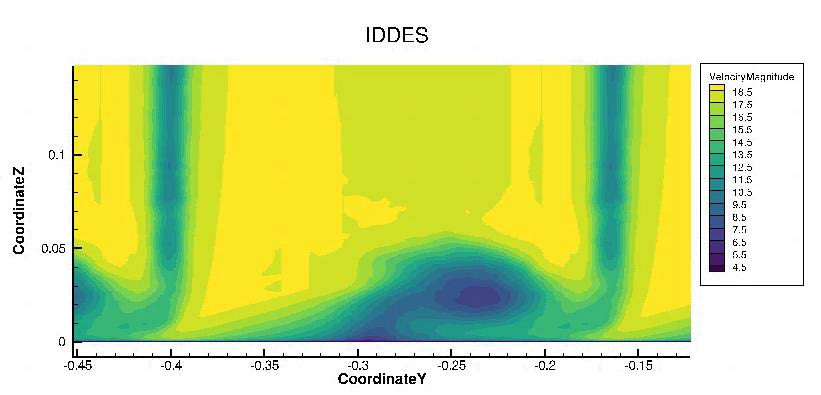 Figure 1: Velocity Magnitude downstream of the compressor cascade for IDDES, RANS
and Experiment.
Figure 1: Velocity Magnitude downstream of the compressor cascade for IDDES, RANS
and Experiment. 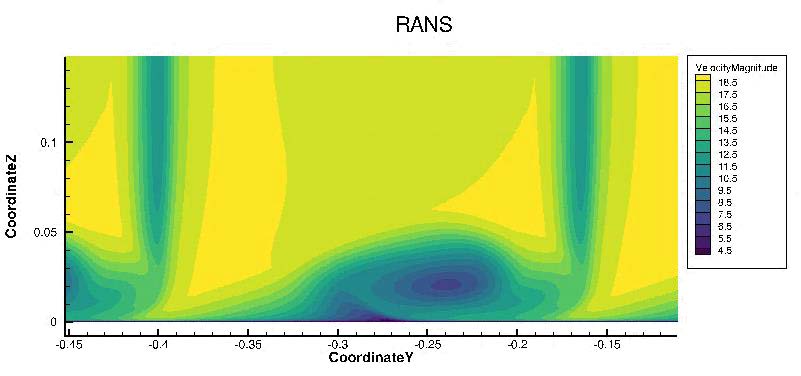 Figure 2: Velocity Magnitude downstream of the compressor cascade for IDDES, RANS
and Experiment.
Figure 2: Velocity Magnitude downstream of the compressor cascade for IDDES, RANS
and Experiment. 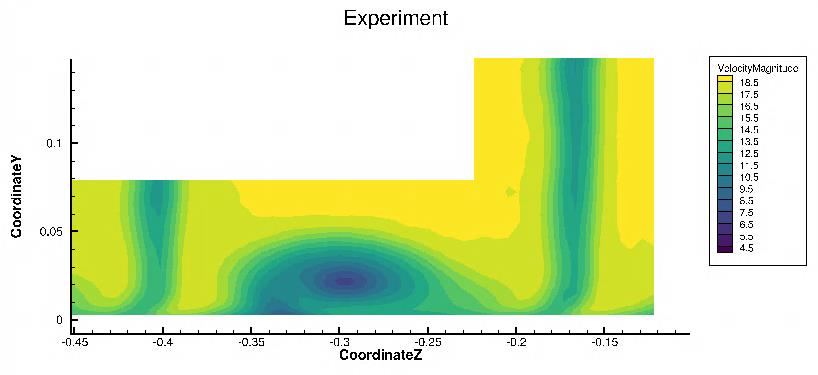 Figure 3: Velocity Magnitude downstream of the compressor cascade for IDDES, RANS
and Experiment.
Figure 3: Velocity Magnitude downstream of the compressor cascade for IDDES, RANS
and Experiment. 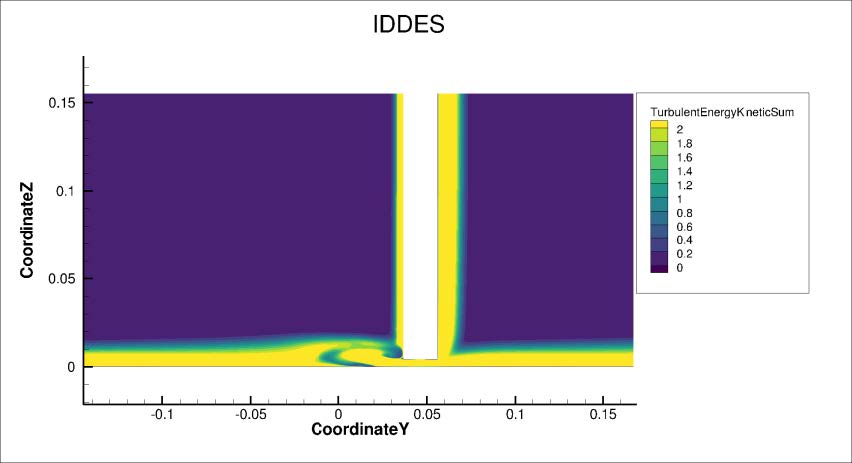 Figure 4: Sum of the resolved and modelled turbulent kinetic energy within the blade passage at 22% axial chord length...
Figure 4: Sum of the resolved and modelled turbulent kinetic energy within the blade passage at 22% axial chord length... 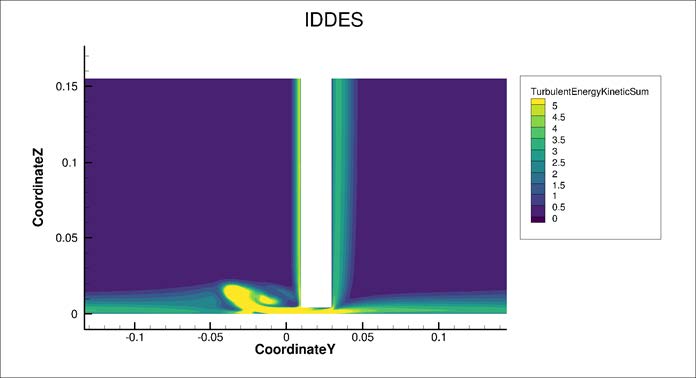 ...and 32 % axial chord length.
...and 32 % axial chord length.  Figure 5: Nondimensional Cell sizes on the blade surface to validate the grid resolution.
Figure 5: Nondimensional Cell sizes on the blade surface to validate the grid resolution.  Figure 6: Visualization of the vortex structure using the 𝜆2-criterion and the vorticity in
axial direction.
Figure 6: Visualization of the vortex structure using the 𝜆2-criterion and the vorticity in
axial direction.